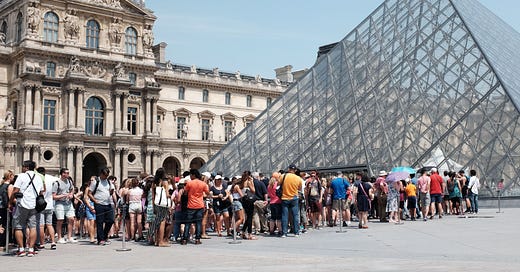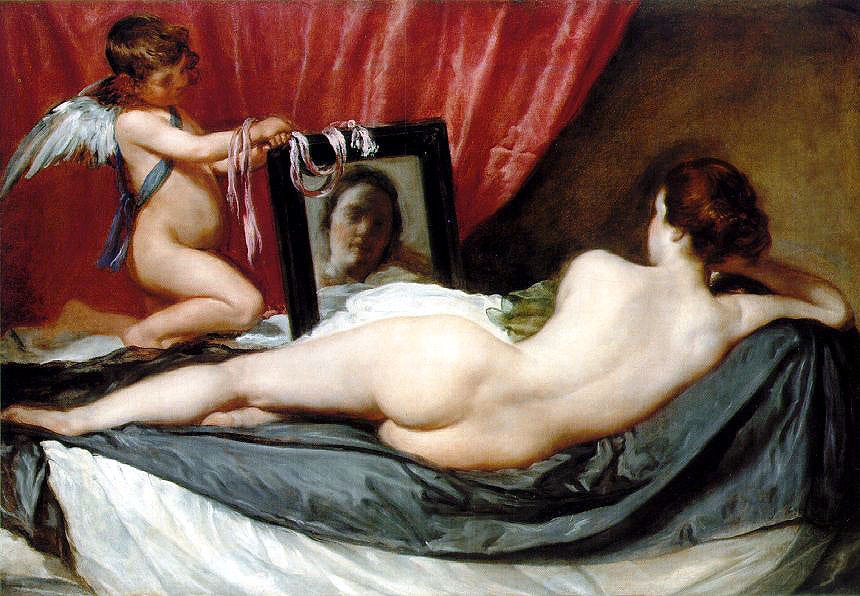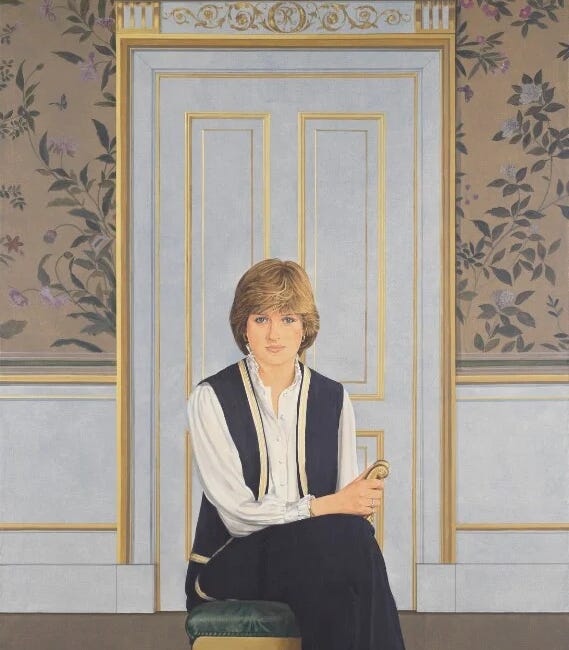Tourism is getting nasty. Thousands of demonstrators took to the streets of cities across southern Europe this week to protest against overtourism, colossal AirBnB engagement in formerly residential areas and the simple quality of life issues caused by millions of visitors arriving every summer.
One of the forces at the root of the malaise seems to be ‘selfie tourism’, a phenomenon wherein social media influencers are paid to encourage people to visit a particular spot, in order to capture it and themselves post it on social media, thus enhancing the influencer’s influence and in the process, advertising the spot. A small beach in the Balearics is one such spot.
A tiny bay, here photographed with about nine visitors, it was overwhelmed with the arrival of about 4,000 people a day after the local authority promoted it on social media. Now there is no promotion allowed.
Social media is unquestionably the Baedeker de nos jours, (if you can bear such a Euro-melange). Only, the power of this phenomenon makes the 19th century originator of the guide book look positively weedy.
I have concrete evidence of this. Last year we went to Australia for Christmas along with my daughter who is 22. I had brought along a couple of guide books. Rookie error.
When we arrived in Melbourne, we thought it would be nice to go for a drink. “I’ve found a great place,” announced my daughter, who had also never been to Melbourne before. “It’s called Naked for Satan.” My husband and I were clearly the oldest people there (by quite a long way) but it was fun, and cool. Where did she find out about it? Instagram.
On Christmas Day, we wanted to go to the beach, but had no car. All the car hire offices were shut. After 3 seconds on her phone, my daughter piped up. “Let’s use Turo. It’s an app where you can get a car for the day, from anyone.” We jumped into a lovely yellow VW Golf dropped off for us by, er, the owner of the VW Golf, and got satisfyingly sunburned. How did she know about this? Instagram.
By this stage, my husband was announcing that he would never again arrange a trip without advice from someone in their 20’s.
Instagram, TikTok and the influencers who work on them now have such a hold over tourist networks that having your sandwich bar, or car rental app recommended by them is akin to winning the lottery. If you are in any large city and see a staggeringly large queue of people outside what looks like a perfectly ordinary café, this is why.
This used to be a normal cafe in Islington.
The patiently queuing people will be following a decree from their phones that within these doors lies “the best croissant in Paris” or “the best sourdough in North London.” Travel-related content has risen 410% since 2021 on TikTok. Last year nearly 2 million travel-related posts were made on Instagram.
What has this got to do with the arts? Well, it is one of the reasons that the Louvre is fast moving from the world’s most visited museum, to the world’s first museum in danger of collapsing due to overtourism.
An everyday sight at the Louvre
Last week the front of house staff, including gallery attendants and security workers operated a wildcat strike (unauthorised work stoppage without a union vote). Already a diminishing force, reduced by about 200 people since 2010, the staff cannot cope with the stress of nearly 9 million people annually trooping into their museum.
The combined impact of social media and post-pandemic tour groups is breaking the model.
“We didn’t plan to go on strike, but the staff are so exhausted, they can’t support the conditions getting worse and worse,” said Christan Galani, spokesman for the C.G.T. Culture union, which supports workers at the Louvre.
Indeed, things are rather mad down in the First Arrondissement. Tap #Louvre on Instagram and you will see why. Hundreds, no, thousands of posts showing photogenic young people in front of I.M.Pei’s glass pyramid, or of course the Mona Lisa. Zero queues, of course.
There is a rather extraordinary democracy about the way the advice is delivered; on Instagram, Tiebowtie’s reel entitled “10 must-visit places in Paris” (scoot down the site for it), is a case in point. This short film, which has had 1.7m views, advertises the city via a series of beautiful women in shorts, walking around said places. The Eiffel Tower comes in at No 1, which is fair enough, but the Louvre actually ranks at No 8, after a brasserie, La Favorite (No 3) and a cafe, Angelina (No 6), both of which are presumably now struggling with huge queues.
The Louvre has tried to limit daily attendance to 30,000 people and this year it announced plans to build a unique gallery for Mona Lisa, with its own ticketing system and its own queue. That probably won’t help the overall issue, however, which is that when you are in Paris, social media dictates you must go to the Louvre.
Even hiking the basic ticket prices up hasn’t put people off. Ticket prices seemingly are no barrier.
The National Gallery in London, which has free admission, has been plagued by the opposite problem, in other words diminished post-Covid visitor levels.
Why, when its rival in Paris is struggling under them? Alright, it doesn’t have La Gioconda, but it has an equally impressive array of familiar Old Masters; da Vinci (tick), Vermeer (tick), Velasquez (tick), not to mention all the other beloved works by household names (Holbein, Gainsborough, Hogarth, Turner, Seurat, Monet, etc).
The peerless ‘Rokeby’ Venus (c.1647) by Velazquez at the National Gallery. Yours for nothing.
Things are also gloomy at Tates, both Britain and Modern, plus the Royal Academy. London galleries can be accused of many things, but overtourism is not one of them.
The National Gallery would say in its defence, that it has had many of its permanent glories either out of the building or under dust-sheets prior to the reopening of the Sainsbury Wing, so let’s see the figures for next year. Plus, its van Gogh and Siena exhibitions were well-attended.
Maybe it’s the style of the influencers used by the National Gallery. I am not going to do a comprehensive survey on Instagram, but while Paris frolics around with a babe in shorts (sorry, but this is the case), and highlights FUN, I find myself looking at Petite Blondine’s Best Free Things to do in London (part 6), which shows the Gallery on a cloudy day, highlights a picture by Guido Reni and suggests there is no better place “for a cute cultural date”. Hmm.
I have no idea how to cope with the bigger malaise of overtourism but some of the Louvre’s thousands of visitors would be very welcome at the National Gallery. Could someone please make a post on Tik Tok which suggests this? Thanks so much for reading The Arts Stack! If you’d like to be a paid subscriber, you’d be very welcome AND you’ll get my fortnightly Five of the Best post. See you next week for more from the arts world which is many things, but never, ever dull.
Five of the Best - National Portrait Gallery
The National Portrait Gallery. The world’s first national gallery devoted to portraits. But where to start? With the permanent collection, it’s tempting to behave as if you were in Madame Tussaud’s and just clock famous people. But there is great art here, powerful and politically focused. Radical art, in fact. If you’ve never been to the NPG before, or always look at the same pictures, here’s my Five of the Best which might illuminate another facet of this engaging collection.











I am reminded of a passage from Nassim Nicholas Taleb’s Black Swan. NNT is recommended by a friend at college to get a job with ‘leverage’, such as in the financial services industry. The ancillary costs of managing $10bn are not 10x those of managing $1bn, so more money accrues to the successfully manager who has the larger fund. NNT follows this advice, but subsequently concludes that, in the world of ‘leverage’, the rewards are very skewed. He ultimately concludes a better career would be one like medicine, which does not have the same leverage.
Football is similarly leveraged. When watching football meant going to your local stadium, then the leverage was that the clubs with a larger stadium could pay more. But now the leverage comes from the biggest clubs having millions of followers on TV and social media, so the Premiership footballers earn huge sums while those in the lower divisions (still in the best few percent of all footballers) receive a fraction of that.
Being 'older generation' means no Instagram or Tik Tok for me, I choose my preferred boulangerie by sampling them all.